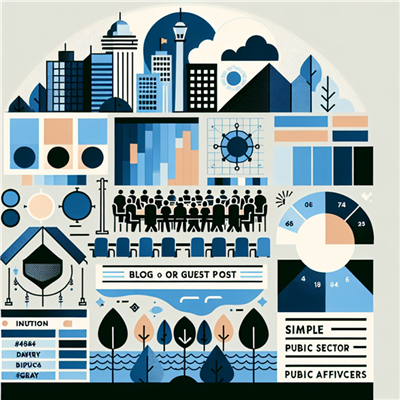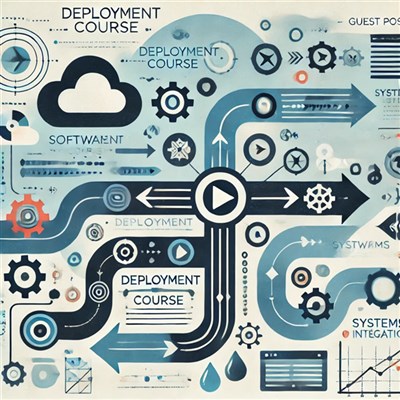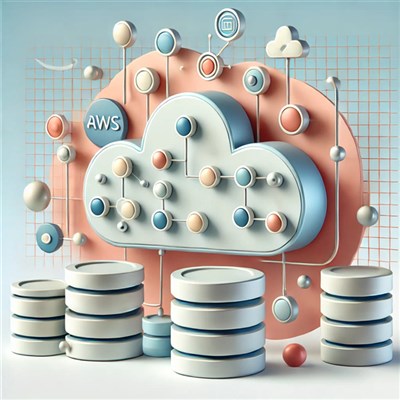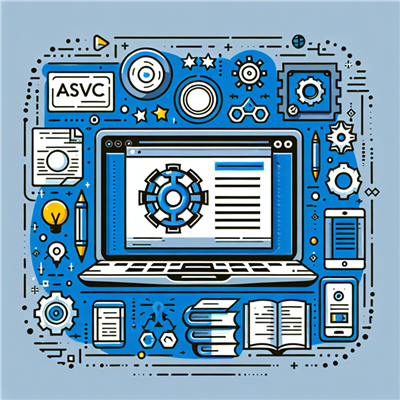development.jpgL.jpg)
Java EE (now Jakarta EE) is a powerful platform for building scalable, secure, and enterprise-grade applications. With a wide range of frameworks available, developers can streamline development processes, improve efficiency, and enhance maintainability.
In this article, we’ll explore the top 10 Java EE frameworks that are widely used in enterprise application development.
Top 10 Java EE Frameworks for Enterprise Development
1. Spring Framework
Best for: Enterprise applications, microservices, cloud-native development
Spring is one of the most popular Java EE frameworks, widely used for building robust enterprise applications. It provides extensive support for dependency injection, aspect-oriented programming (AOP), and transaction management.
Key Features:
- Spring Boot for rapid application development
- Spring Security for authentication and authorization
- Spring Data for easy database interaction
- Spring Cloud for microservices architecture
Spring’s flexibility makes it an ideal choice for modern cloud-based applications and microservices.
2. Hibernate
Best for: Object-relational mapping (ORM) and database management
Hibernate is a widely used ORM (Object-Relational Mapping) framework that simplifies database interactions in Java EE applications. It eliminates boilerplate JDBC code and allows developers to work with objects instead of SQL queries.
Key Features:
- Supports JPA (Java Persistence API)
- Automatic transaction management
- Caching for performance optimization
- Supports various databases (MySQL, PostgreSQL, Oracle, etc.)
Hibernate is an essential framework for handling database interactions efficiently in large-scale enterprise applications.
3. JSF (JavaServer Faces)
Best for: Web applications and UI development
JavaServer Faces (JSF) is a component-based web framework used to build Java EE web applications. It provides reusable UI components and integrates seamlessly with Facelets and PrimeFaces.
Key Features:
- Built-in UI components
- Supports MVC architecture
- Integration with CDI (Contexts and Dependency Injection)
- Works well with HTML5, AJAX, and WebSockets
JSF is a great option for enterprises looking to develop scalable web applications with Java EE.
4. Struts
Best for: Enterprise web applications with MVC architecture
Apache Struts is an MVC (Model-View-Controller) framework that simplifies web application development. It is built on Servlets and JSP and provides enhanced control over the request-response cycle.
Key Features:
- Action-based MVC framework
- Supports interceptors for request processing
- Integration with Spring and Hibernate
- Extensible tag libraries
Struts is widely used in legacy enterprise applications that require structured web development.
5. Grails
Best for: Rapid application development (RAD) in Java
Grails is a Groovy-based Java EE framework that follows the convention over configuration principle. It simplifies enterprise application development by reducing boilerplate code.
Key Features:
- Uses Groovy, which is simpler than Java
- Built-in support for RESTful APIs
- Integration with Spring Boot and Hibernate
- Convention-based coding to increase developer productivity
Grails is particularly useful for startups and enterprises looking for fast development cycles.
6. Vaadin
Best for: Building modern, interactive web applications
Vaadin is a Java UI framework that allows developers to build rich web applications with Java alone—no need for JavaScript, HTML, or CSS.
Key Features:
- Server-side UI rendering
- Support for Progressive Web Apps (PWAs)
- Data binding with backend services
- Fully responsive and mobile-friendly
Vaadin is ideal for business applications where developers need highly interactive UIs without managing front-end technologies.
7. Play Framework
Best for: High-performance, scalable web applications
Play is a reactive web framework built for speed and scalability. Unlike traditional Java EE frameworks, Play is non-blocking and asynchronous by default.
Key Features:
- Stateless and non-blocking architecture
- Built-in support for REST APIs and WebSockets
- Hot reloading for faster development
- Works well with Akka and Scala
Play is widely used in high-performance applications, such as real-time dashboards and event-driven systems.
8. Dropwizard
Best for: Developing lightweight and RESTful microservices
Dropwizard is a minimalist Java framework designed for building REST APIs and microservices. It bundles together essential libraries like Jetty, Jersey, Jackson, and Metrics.
Key Features:
- Lightweight with a small memory footprint
- Built-in support for Jersey (REST API framework)
- Secure by default with SSL/TLS support
- Out-of-the-box monitoring tools
Dropwizard is best suited for developing microservices-based enterprise applications.
9. Quarkus
Best for: Cloud-native Java applications and Kubernetes
Quarkus is a Kubernetes-native Java framework designed for building lightweight and high-performance applications. It is optimized for GraalVM and OpenJDK.
Key Features:
- Fast startup time and low memory usage
- Optimized for serverless and containerized deployments
- Integration with Eclipse MicroProfile
- Supports both imperative and reactive programming
Quarkus is a perfect choice for cloud-native and serverless Java EE applications.
10. Micronaut
Best for: Microservices and serverless applications
Micronaut is a lightweight Java framework designed for microservices architecture. It provides low memory consumption and fast startup times.
Key Features:
- Ahead-of-time (AOT) compilation for improved performance
- Supports dependency injection without reflection
- Integration with Kafka, RabbitMQ, and Kubernetes
- Built-in support for JWT authentication
Micronaut is widely used for scalable microservices in enterprise applications.
Conclusion
Java EE offers a rich ecosystem of frameworks that cater to enterprise application development, web development, microservices, and cloud computing. Whether you're building a traditional enterprise system with Hibernate and JSF or diving into modern cloud-native development with Quarkus and Micronaut, there's a framework suited for your needs.
Each of these frameworks provides unique advantages—choosing the right one depends on your project requirements, scalability needs, and performance expectations.
Each of these frameworks has its strengths and is suitable for different types of projects. To get a deeper understanding and hands-on experience with these frameworks, consider enrolling in a Java EE training certification course at Koenig Solutions, a leading IT training company providing certifications in top technology courses. Their expert trainers will guide you through the intricacies of these frameworks and help you become a proficient Java developer.







COMMENT